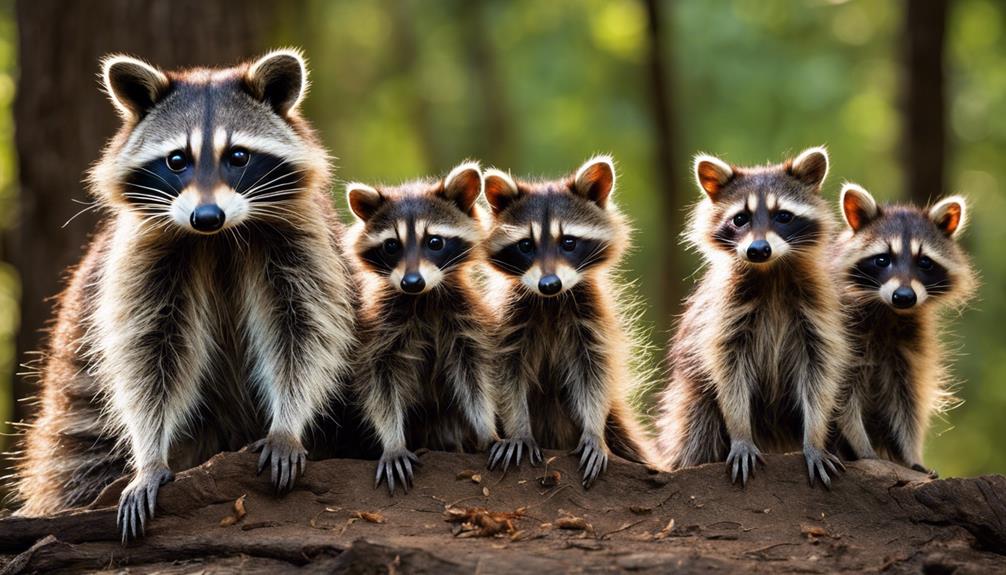In the world of plants, seven species boast the intriguing name 'cat,' each offering distinct features that cater to both aesthetic and practical preferences. From Catnip's playful effects on feline friends to Cat Grass providing essential nutrients for them, these plants span a range of climates and benefits. Cat Thyme's Mediterranean charm and Catmint's pollinator-attracting blooms showcase nature's diversity. Cats Claw from the Amazon rainforest stands out for its medicinal uses, while Cats Tail adds a touch of whimsy with its dangling flowers. Cats Whiskers, with its medicinal qualities and ornamental appeal, round out this fascinating list. Uncover more about these captivating plants.
Key Takeaways
- Catnip: Triggers playful behavior in cats, used in teas, native to Asia and Europe.
- Cat Thyme: Fragrant leaves loved by cats, thrives in Mediterranean climates.
- Cats Claw: Amazon vine with medicinal properties, antioxidant and anti-inflammatory.
- Cats Tail: Tropical shrub with red or pink fuzzy tails, thrives in warm climates.
- Catmint: Aromatic foliage, drought-tolerant, attracts pollinators and supports local populations.
Catnip (Nepeta Cataria)
We find that Catnip (Nepeta Cataria) entices both humans and felines with its unique properties. This perennial herb, known for its irresistible attraction to our furry friends, contains nepetalactone, the compound responsible for triggering the playful behavior in cats.
On the human side, catnip can be brewed into calming teas, offering a soothing effect. Cultivating catnip is relatively easy, requiring warmth, humidity, and well-drained soil to thrive. It's a versatile plant native to Asia and Southern Europe, belonging to the mint family.
When grown in home gardens, catnip can be a delightful addition for both pets and their owners to enjoy. Whether watching cats revel in its euphoric response or sipping on a cup of catnip tea for relaxation, this herb's dual appeal makes it a valuable addition to any garden.
Cat Thyme (Teucrium Marum)
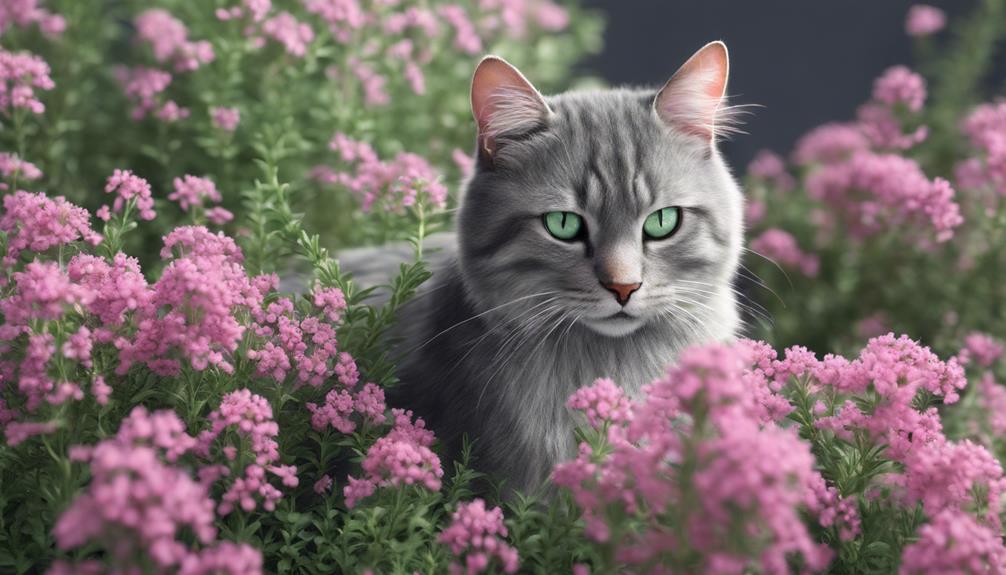
Cat Thyme, also known as Teucrium Marum, is a perennial herb loved by cats for its fragrant leaves. It thrives in Mediterranean climates and is a charming addition to rock gardens and herb gardens.
Discover the benefits of growing Cat Thyme and how to care for this aromatic plant in your own garden.
Cat Thyme Benefits
Discussing the benefits of Cat Thyme, also known as Teucrium Marum, reveals its potential medicinal properties and aromatic qualities. This herb, with its strong scent that attracts cats, isn't only a charming addition to gardens but also a source of herbal benefits.
Cat Thyme, native to the Mediterranean region, is known for being drought-tolerant and low-maintenance, thriving in well-drained soil. The small pink flowers it produces not only add a burst of color to garden beds and containers but also contribute to its aesthetic appeal.
Historically, Cat Thyme has been believed to possess medicinal properties, making it a valuable herb for both ornamental and potential therapeutic purposes.
Growing Cat Thyme
Cultivating Cat Thyme, a perennial herb from the mint family, demands attention to its specific soil and water needs to flourish in your garden.
Cat Thyme, also known as Teucrium Marum, is esteemed for its aromatic properties, resembling a blend of thyme and oregano. This low-growing shrub with gray-green leaves and clusters of pink to purple flowers is drought-tolerant and prospers in well-drained soil.
When tending to Cat Thyme, make sure it receives ample sunlight and avoid overwatering, as it prefers drier conditions.
Not only does Cat Thyme add a delightful fragrance to your garden, but it also attracts important pollinators like bees and butterflies, enhancing the biodiversity of your outdoor space.
Enjoy the benefits of this herb, similar to catnip, by nurturing it with care.
Cats Claw (Uncaria Tomentosa)
Cats Claw, scientifically known as Uncaria Tomentosa, is a vine native to the Amazon rainforest. This plant is widely utilized in herbal medicine due to its potential health benefits, such as antioxidant and anti-inflammatory properties.
For those interested in growing Cats Claw, understanding its benefits is important in cultivating this plant successfully.
Cats Claw Benefits
With its origins in the Amazon rainforest, Cat's Claw (Uncaria tomentosa) has garnered attention for its medicinal properties, particularly its immune-boosting and anti-inflammatory effects. This woody vine, known for its essential capabilities, has been used by indigenous tribes for generations.
Cat's Claw contains beneficial compounds such as alkaloids and polyphenols that contribute to its health benefits. Studies suggest that this plant may help reduce inflammation, support the immune system, and enhance overall well-being. Its popularity as a natural remedy continues to grow, with many turning to Cat's Claw for relief from conditions like arthritis, digestive issues, and viral infections.
Embracing the power of Cat's Claw could be a step towards enhancing our health and vitality.
Growing Cats Claw
Having originated in the Amazon rainforest, the tropical vine known as Cat's Claw (Uncaria tomentosa) has gained recognition for its potent medicinal properties.
Cats Claw, also called 'cat's claw' due to its curved thorns resembling a cat's claw, is a climbing vine native to the Amazon rainforest. This plant has been utilized in traditional medicine for centuries and is believed to possess immune-boosting and anti-inflammatory benefits.
When growing Cats Claw, it's important to provide support as it can climb up to 30 feet in height. By understanding the specific needs of this vine, such as proper support structures and adequate sunlight, one can cultivate a thriving Cats Claw plant that may offer various health benefits.
Cats Tail (Acalypha Hispida)
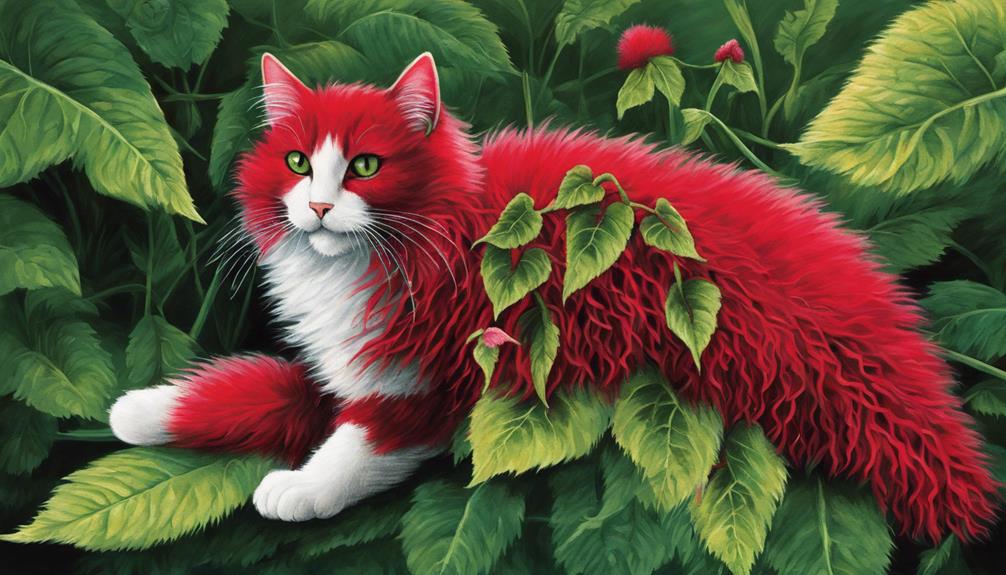
Referred to as the 'Chenille Plant' for its resemblance to a fuzzy caterpillar, the tropical shrub Cats Tail (Acalypha Hispida) boasts long, dangling red or pink fuzzy tails of flowers. This whimsical plant thrives in warm, humid climates, making it a perfect addition to gardens or as a decorative indoor plant. Its vibrant and unique appearance adds a playful touch to any space, creating a striking visual display with flowers that can grow up to 12 inches long. Here is a table to showcase the charming characteristics of the Cats Tail plant:
| Feature | Description |
|---|---|
| Appearance | Resembles a fuzzy caterpillar with long, red/pink tails |
| Ideal Climate | Thrives in warm, humid environments |
| Usage | Perfect for hanging baskets or indoor decoration |
Cats Tail (Acalypha Hispida) is not just a plant; it's a delightful companion that brings joy and color to any setting.
Catmint (Nepeta Faassenii)
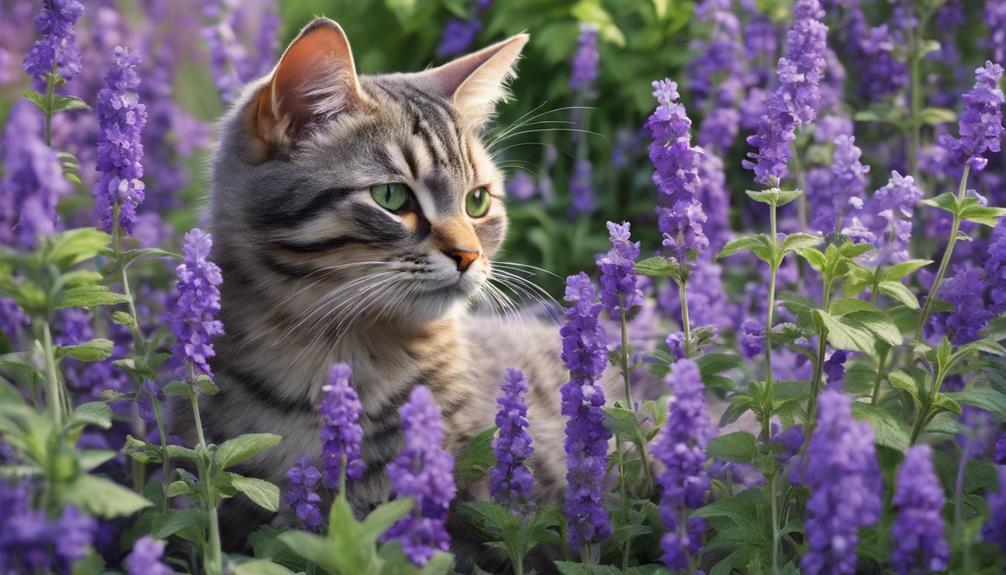
Catmint (Nepeta Faassenii) pleasantly surprises gardeners with its aromatic foliage and charming lavender-blue flowers. This perennial herbaceous plant, a member of the mint family, is a favorite for many due to its low-maintenance nature and drought tolerance.
Not only does catmint add ornamental value to landscapes, but it also acts as a magnet for pollinators like bees and butterflies, enhancing the biodiversity of your garden. The delightful fragrance that emanates from its leaves makes it a crucial delight for anyone who encounters it.
Catmint isn't just visually appealing but also serves an essential role in supporting local pollinator populations, making it a valuable addition to any garden. Its ability to thrive in various growing conditions and resistance to deer further solidify its status as a must-have plant for both novice and experienced gardeners looking to create a vibrant and lively outdoor space.
Cat Grass (Dactylis Glomerata)
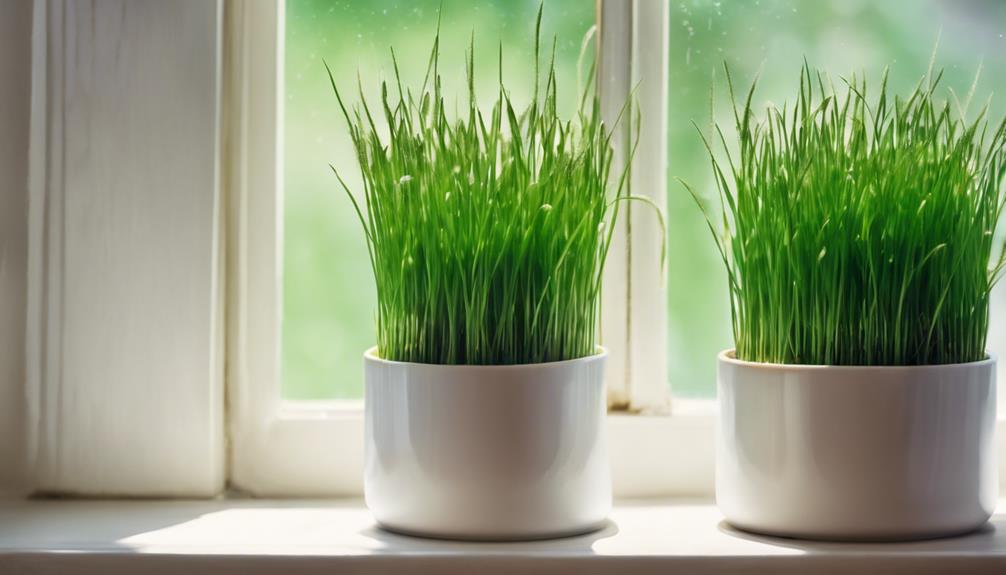
Cat Grass, also known as Dactylis Glomerata, is a cool-season perennial grass that's popularly cultivated as a special treat for feline companions. Felines are naturally drawn to this grass, which can be easily grown indoors or outdoors.
Besides being a delightful snack for cats, Cat Grass serves a beneficial purpose for their digestion. This grass provides a safe and natural source of fiber, aiding in digestion and promoting overall feline health. Packed with essential nutrients like folic acid, Cat Grass can contribute to enhancing the well-being of our beloved cats.
In addition, it offers a non-toxic alternative for cats to nibble on, reducing the risk of them consuming potentially harmful plants. By satisfying cats' instinctual urge to chew on grass, Cat Grass not only aids in their digestion but also provides mental stimulation, enriching their environment and promoting healthy behavior.
Cats Whiskers (Orthosiphon Stamineus)
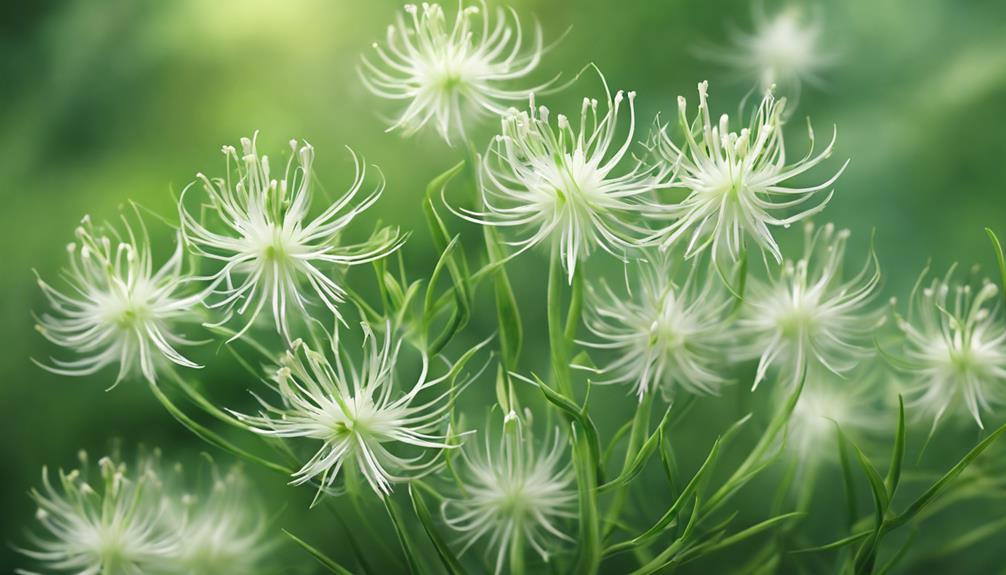
Thriving in tropical climates, Cats Whiskers, scientifically known as Orthosiphon Stamineus, boasts elegant white or lavender flowers that add a touch of sophistication to any garden landscape.
This resilient plant, resistant to deer and rabbits, acts as a magnet for butterflies, enhancing the beauty of outdoor spaces with its ornamental allure. Cats Whiskers flourishes best under the warm embrace of part to full sun, requiring only average watering to thrive, making it a hassle-free addition to your garden.
Propagating this plant is a breeze, whether through seedheads or softwood cuttings, offering an effortless way to expand its presence in your outdoor sanctuary.
Beyond its aesthetic charm, Cats Whiskers also packs a punch with its medicinal benefits, aligning beauty with functionality seamlessly. Embrace the allure of Cats Whiskers in your garden, where its grace and utility intertwine to create a harmonious haven for both you and nature.
Frequently Asked Questions
What Is the Name of the Plant With a Cat in It?
Familiar with the plant with a cat in its name. It's Catnip, adored by cats and humans alike for its calming properties. Ideal for calming nerves or entertaining feline companions. The charm of Catnip!
What Is the Flower With the Word Cat in the Name?
We call it Catmint, also known as Nepeta. This flower, native to Asia and Southern Europe, grows up to 2-3 feet. Its leaves can flavor tea and trigger euphoria in some cats. It's a lovely addition to any garden.
What Flower Is Named After a Big Cat?
We found a stunning flower named after a big cat. Its vibrant orange blooms evoke the majestic leopard. This beauty, Iris domestica or Leopard Flower, captivates with its unique charm and ability to thrive in various light conditions.
What Is a Cute Flower Name for a Cat?
We think a cute flower name for a cat could be 'Kitty's Delight.' It attracts charm and elegance, enchanting butterflies and defying deer. It thrives in sunny spots with average watering needs, making it a delightful addition to any garden.
What Are Some Plants with ‘Cat’ in Their Name that Are Safe for Small Animals?
If you have small but strong animals, you may want to consider having catnip, catmint or cat thyme in your garden. These plants with “cat” in their name are safe for small animals and can provide a stimulating and enjoyable environment for them to explore.
Conclusion
To sum up, these plants with 'cat' in their name offer unique qualities and benefits for both indoor and outdoor gardening. While some may attract feline friends, others may provide medicinal properties or add aesthetic appeal to your garden.
By incorporating these plants into your landscape, you can create a harmonious environment that's both visually pleasing and beneficial for your well-being. Explore the world of 'cat' plants and discover the wonders they've to offer.

